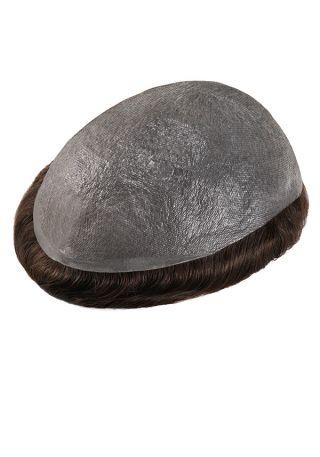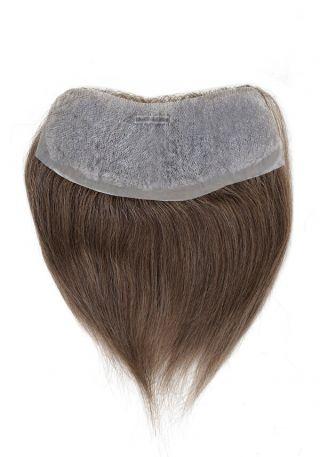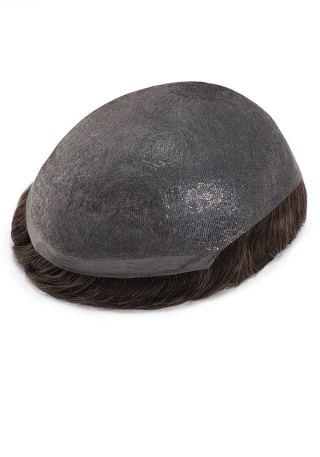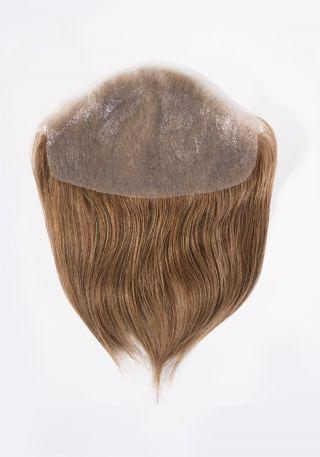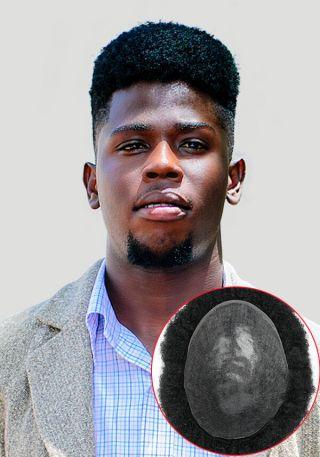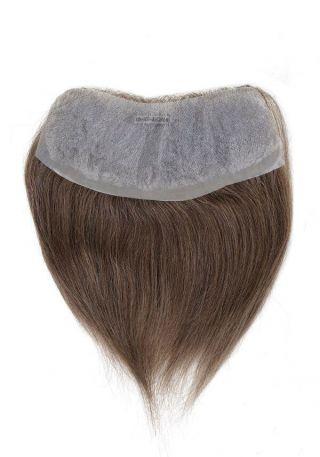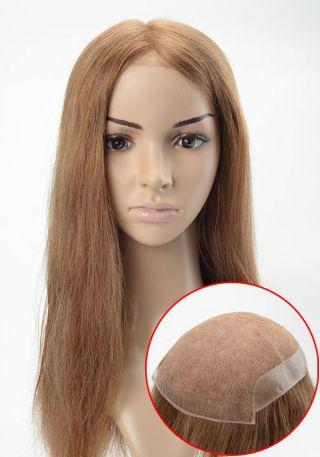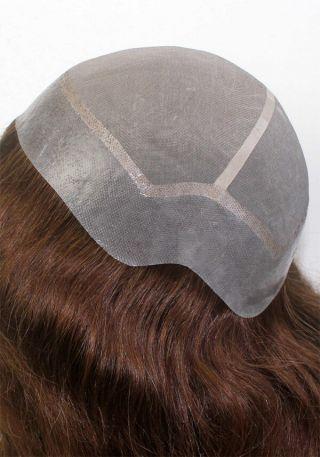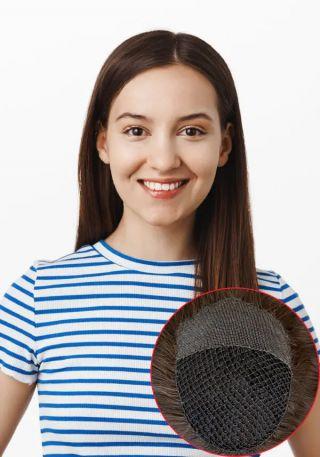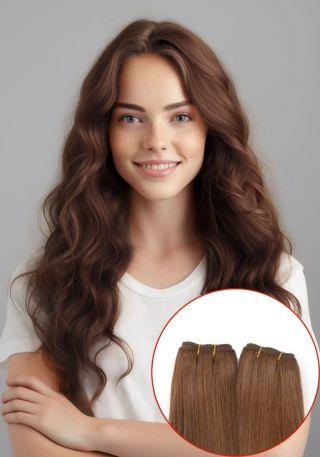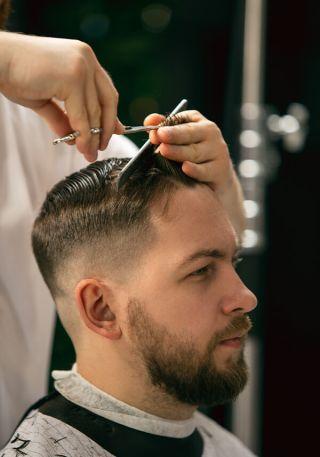11 Types of Hair Loss in Males That Leads to Baldness and Damage
- Written by Vivek Khullar
- Oct 3, 2024
- |
- 16 min read
 Listen to the full text
Listen to the full textAccording to Medihair, around 85% of men will experience hair loss at some point in their lives. This points out how much of a common issue it is. But did you know there are various types of hair loss, and conditions that lead to partial or full hair fall? Yes, hair loss is not just one color; there are a lot of gray shades in there.
In this blog, Lordhair will tell you about different types of hair loss that males face. We will also explore a range of treatments tailored to each type. So, whether you’re noticing a few more broken strands in the shower or a significant change in your hairline, our guide will equip you with the knowledge you need to tackle your hair loss head-on!
In a hurry? Here’s the TL;DR version of this blog:
What are different types of hair loss in males?
Men experience various forms of hair fall including:
Alopecia areata
Androgenetic alopecia
Telogen effluvium
Anagen effluvium
Tinea capitis
Cicatricial alopecia
Discoid Lupus Erythematosus
Folliculitis decalvans
Loose anagen syndrome
Trichotillomania
Traction alopecia
Can these hair fall conditions be treated?
Some hair loss issues like telogen effluvium and alopecia areata can be treated with right interventions. However, conditions like cicatricial alopecia cause permanent hair loss as they destroy follicles.
What should I do in case of permanent hair loss?
Men who have lost their hair permanently can consider buying hair systems. For those who don’t know, a hair system is a non-surgical solution that ‘covers up’ the damaged region to give the appearance of a full head of hair.
Now that we shared hair loss types FAQs with you, let’s start with the first hair loss type i.e. alopecia areata.
What are Different Types of Hair Loss in Males?
Here are various types of hair fall that men commonly experience, each with its own causes and characteristics:
1 Alopecia areata
First up, we got alopecia areata. It’s a condition where your immune system mistakenly attacks hair follicles, leading to hair fall. This type of hair loss appears suddenly, typically in small, round patches on the scalp or other areas of your body. You’ll notice these are akin to distinct, coin-sized patches.
In some cases, hair loss can be more widespread. Affecting larger areas on your scalp. While the causes of alopecia areata are not fully understood, it is believed that genetics and environmental factors could trigger it.
How to treat this type of hair loss?
These treatments focus on encouraging hair regrowth and managing the immune response:
Corticosteroid injections: These are the most common treatment for small patches of alopecia areata. Its injections are made directly into the affected area, typically every 4-6 weeks. It can help in reducing inflammation and suppress your immune system from attacking hair follicles.
Light therapy: Also called phototherapy, light therapy involves using UV light combined with a photosensitizing agent to boost hair regrowth. It can be used when corticosteroid isn’t turning out to be that effective.

2 Androgenetic alopecia
Often called male pattern baldness, androgenetic alopecia typically begins with a receding hairline and thinning at the crown, eventually leading to more significant hair loss across the scalp. The telltale sign is an M-shaped hairline which progresses over time as hair follicles shrink and produce thinner, shorter strands before stopping growth altogether.
Talking about causes, well, this type of hair loss is all about its name. Meaning, its causes are mainly genetic and hormonal. Dermatologists usually link it with a hormone called dihydrotestosterone (DHT).
How to Treat it?
Males can consider the following treatments for overcoming this type of hair loss:
Finasteride: It’s a FDA-approved oral medication, and works by lowering DHT levels in your body. This prevents hair follicles from shrinkage, and promotes regrowth. Although it has been effective for some men, others have reported side effects like cold sweats, dizziness, swelling, redness, and even the inability to keep an erection.
Hair transplant surgery: This option involves moving hair from areas of the scalp that still have growth to areas where androgenetic alopecia has caused baldness. Though the results are permanent, hair transplant surgery also has its share of side effects. And yes, it’s very costly.
3 Telogen effluvium
A temporary type of hair loss that causes excessive shedding of hair. Telogen effluvium causes the hair to thin all over the scalp rather than in patches. It occurs when a large number of follicles enter the resting phase (also referred as telogen phase) of the hair growth cycle prematurely.
Telogen effluvium can be caused by stress, illness, surgery, extreme dieting, or even certain medications. Hair fall usually begins 2-3 months after the triggering event. It can last for several months before stabilising.
How to treat this type of hair loss?
Top hair experts recommend these methods for dealing with telogen effluvium:
Biotin supplements: Known for supporting hair strength and growth, biotin can be effective in improving hair thickness and quality, especially when nutritional deficiencies are involved.
Scalp massages: Regular massages can improve blood circulation to the scalp. It can help the hair follicles receive the nutrients they need to recover from damage caused by telogen effluvium. Combine them with essential oils to reduce stress and further improve hair regrowth speed.
Don’t forget to check out these sources as well:
Genetic hair loss causes and treatments
Learn about telogen effluvium hair loss and treatments
Connection between antibiotics and hair loss explained
Tinea capitis hair loss
Autoimmune hair loss
4 Anagen effluvium
We know what you’re thinking, “Is this type of hair loss the same as telogen effluvium?” Well, there’s a difference. Unlike the one we previously talked about, anagen effluvium affects the growth phase (anagen phase) of the hair cycle rather than the resting phase.
In this condition, hair loss occurs rapidly (often within days or weeks) and it can result in complete baldness. Causes behind anagen effluvium are generally linked to external factors that damage the follicles during their growth phase. For example, chemotherapy, radiation therapy, or exposure to toxic chemicals.
Anagen effluvium is more common in men undergoing cancer treatments.
What are the treatments for this type of hair loss?
Cooling caps: Experiencing anagen effluvium due to chemotherapy? Consider using cooling caps. These can help you decline blood flow to the scalp, and thus limit the amount of chemo drugs that reach hair follicles. This helps reduce hair fall.
Minoxidil: Males also consider using minoxidil for treating this type of hair loss. Popular by the name Rogaine, this medication can speed up hair regrowth after the triggering factor is removed. It’s true that it doesn’t prevent hair loss but it may encourage faster recovery.
We recommend getting a prescription from your dermatologist since it can result in a reduction of telogen phase. And that’s not it! Minoxidil can also cause side effects like skin irritation, scaly changes of scalp, isolated pruritus, allergic contact dermatitis, thrombocytopenia, leukopenia, and hypertension.
5 Tinea capitis
This hair condition is different from other types of hair loss we’ve discussed earlier. It’s a fungal infection of the scalp that typically results in patchy, scaly bald spots that can appear red and swollen, and in some cases, accompanies itching. Normally, tinea capitis affects children but can occur in adults as well. The bald patches may become inflamed too. In fact, they may even ooze or you may see black dots where the hair has broken off at the scalp.
Tinea capitis happens due to fungal infection caused by dermatophytes which invade the hair shaft and scalp skin. This hair loss type is highly contagious, and can spread through direct contact or shared items like hats or brushes.
How to treat it?
Antifungal medications: Prescription oral antifungal drugs like griseofulvin and terbinafine can be used to eliminate the infection from within. Why oral and not topical medications, you ask? Because they are not effective in case of tinea capitis!
Antifungal shampoos: Medicated shampoos rich in ingredients like ketoconazole and selenium sulphide can help you reduce the spread of fungus. They can even reduce the spread of fungus and soothe scalp irritation.

6 Cicatricial alopecia
Also called scarring alopecia, cicatricial alopecia is a rare but serious form of hair loss. In this hairfall condition, inflammation destroys hair follicles and replaces them with scar tissue. Unlike other hair loss types that we discussed above, the damage here is permanent. Meaning, hair cannot grow in the affected areas.
Males suffering from this type of hair loss may notice that their scalps have turned red and inflammation. They may even see pustules. Over time, however, the affected areas become smooth and shiny where the scarring has occurred. The causes of cicatrial alopecia are usually linked to lupus or lichen planopilaris.
How can this type of hair loss be treated?
Topical immunosuppressants: Medications like topical corticosteroids and calcineurin inhibitors can help men reduce inflammation. Not to mention, they prevent further damage to follicles, helping to slow or stop the progression of scarring.
Hair systems: We understand how depressing losing your hair permanently can be. That’s why we introduce hair systems - a non-surgical option that can restore the appearance of a full head of hair, that too instantly! Unlike traditional wigs, these are comfortable and durable.
If bought from a reputed manufacturer like Lordhair, a toupee hair replacement systems are highly realistic. Don’t believe us? Check out how premium our hair system looks after our customer wears it:
7 Discoid Lupus Erythematosus
Next up on our hair loss type list is Discoid Lupus Erythematous, a chronic autoimmune condition that causes inflamed, disc-shaped sores primarily on the scalp and face. These lesions can cause scarring and lead to permanent hair loss if they manage to damage follicles. Dermatologists state that affected areas appear red and scaly but can become discolored over time.
DLE’s cause is tied to the immune system attacking healthy skin cells. However, the exact triggers remain unclear. Sun exposure can also exacerbate this type of hair loss.
How to stop it
Hydroxychloroquine: This treatment can be taken for battling discoid lupus erythematosus. It can not only assist males in controlling inflammation but also help reduce flare-ups, preventing further hair fall.
Laser therapy: By laser therapy, we actually mean low-level laser therapy (LLLT)! It may help you stimulate hair growth in areas where follicles are intact using a non-invasive machine that generates a single wavelength of red light. Laser therapy can be combined with other treatments for improving hair growth results as well.
8 Folliculitis decalvans
Although this type of hair loss in males is rare, this inflammatory scalp disorder can still lead to scarring and permanent hair loss. Folliculitis decalvans start with redness, swelling, and pustules around the hair follicles. Over time, the affected areas can develop scarring, resulting in smooth, bald patches.
Reasons behind folliculitis decalvans are still not completely understood. But dermatologists believe that it could be triggered by bacterial infections like staphylococcus aureus. Overactive immune response may be considered as another reason.
How to treat this type of hair loss
Zinc supplements: You must be thinking, “Why Zinc?” That’s because it has anti-inflammatory properties. In fact, it can boost your immune system, assisting you in managing the condition and preventing recurrence when used alongside other treatments.
9 Loose anagen syndrome
Are you seeing a lot of broken strands while brushing or washing? If so, the reason could be loose anagen syndrome. A condition where hair is easily pulled out of the scalp because it fails to properly anchor in the follicle. Usually, it is commonly seen in children with fine, blonde hair. But that doesn’t mean adults can’t be affected by this type of hair loss.
You may notice that your strands have become thin and wispy. Loose anagen syndrome occurs due to a genetic issue, disrupting hair growth cycle.
What are treatments for loose anagen syndrome?
Avoid harsh hair practices like tight hairstyles, aggressive brushing, and chemical treatments.
Use mild shampoos and conditioners to reduce breakage
Minoxidil can also be used to stimulate hair growth and improve anchoring of hair in follicles. But as we said earlier, be careful as it has its share of side effects.
10 Trichotillomania
Did you sometimes get this urge to pull your hair? Or in fact, you actually pull it? Either way, you may have trichotillomania. Now this type of hair loss is not an autoimmune condition but a psychological disorder. Individuals feel a compulsive urge to pull out their own hair, often from the scalp, eyebrows, or eyelashes.
This behavior leads to noticeable patches of hair loss which can cause distress or shame for those affected. Causes are linked to emotional or mental health issues like anxiety or stress. Dermatologists have classified trichotillomania as body-focused repetitive behavior (BFRB).
How to fix it?
Treatments for this type of hair fall in males involve behavioral therapy. This will help you manage the urge to pull hair. Medications like antidepressants can also be used to treat underlying mental health conditions.
11 Traction alopecia
Alright, the next hair problem on our list is commonly faced by men with long hair. Traction alopecia is a type of hair loss caused by continuous pulling or tension on the strands over time. It is common among those who frequently wear their hair in tight hairstyles like braids, ponytails, and buns. This tension weakens follicles, causing them to stop producing hair as time passes.
How to treat this type of hair loss?
Stop wearing tight hairstyles: To get rid of traction alopecia, first, you need to change your hairstyle to something loose. This will reduce strain and give your scalp time to heal.
Scalp massage: Regularly massage your scalp either with coconut or castor oil. It can help you increase blood circulation and nourish hair follicles. Promoting hair regrowth. Oils also add moisture and strength to hair; preventing further damage.

Types of Hair Loss in Males: Final Words
Above are different types of hair fall conditions in men. We understand how any of these hair loss types can take a toll on your confidence. Thankfully, with the right treatments and a proactive approach, most of them can be overcomed! Whether through medication, lifestyle changes, or proper hair care, there’s always a way to address your concerns.
However, if traditional methods don’t work, consider exploring hair systems from Lordhair. Our wigs for sale and toupees are designed to look completely natural. We provide a variety of customization options too. Guaranteeing that you get a custom-made unit that matches your look and makes you feel comfortable. Check out our catalog to pick the best option!
Contact us in case of queries. Our hair experts will be more than happy to address them for you.



